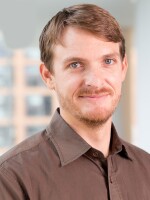AUDIE CORNISH, HOST:
Young people have been at the center of the gun debate since the Parkland shooting. High school students and teenagers have led marches and school walkouts in recent weeks. Youth groups are becoming more vocal on the issue. NPR's Nathan Rott has the story of another gun-related youth movement - a new generation of researchers who are hoping to prevent gun-related violence by better understanding what drives it.
NATHAN ROTT, BYLINE: If you're a young researcher looking to solve the world's problems, you might think that studying gun violence would be something of a sad slam dunk. More than 30,000 people die from gun violence in America every year. Mass shootings, which only account for a small fraction of those deaths, still grab headlines and grip the nation's attention. Everybody wants to see the issue resolved. But for the past two decades, research into gun-related violence has been lacking. The politics of the issue has limited the funding, that is until recently.
VERONICA PEAR: So I'm Veronica Pear. I'm a data analyst here at the Violence Prevention Research Program.
LIZ TOMSICH: I'm Liz Tomsich. I am a research data analyst.
ROCCO PALLIN: I'm Rocco Pallin. I'm also an analyst.
NICOLE KRAVITZ-WIRTZ: And I'm Nicole Kravitz-Wirtz. I'm trained as a sociologist and an epidemiologist.
ROTT: These are just four of the 22 researchers now working at the University of California's Firearm Violence Prevention Center at UC Davis. Their average age is 32. Two and a half years ago, there were only four people in the program, and the average age was a whole lot higher. Garen Wintemute is the center's director.
GAREN WINTEMUTE: The consequence of there being no research funding in this field is there has been a small number of us who stuck it out who started in the '80s. But all of us are in our mid-60s or thereabouts.
ROTT: New funding is now changing that. California recently made this the nation's first state-funded gun research center. New Jersey and New York are looking to fund similar programs. Even Congress seems to be loosening their stance, perhaps opening more funding for federal research. All of this means opportunity for data fiends like Kravitz-Wirtz who, like her peers, grew up in an era of school shootings that stretch back to Columbine.
KRAVITZ-WIRTZ: The issue of firearm violence resonates with our generation. The Parkland students, I think, are just the most recent and vocal example of that.
ROTT: Aaron Shev is a statistician at the center.
AARON SHEV: Coming out of grad school, talking to other people graduating, a lot of people are interested in doing this kind of work. It's just about getting the opportunities out there.
ROTT: And let's be clear here, these are not advocates looking for opportunities to defend a side of the gun debate. They're data analysts who just want to better understand an issue that confounds our society. One of the researchers here grew up in rural Minnesota where gun suicide was a big issue. Rocco Pallin grew up around guns in Louisiana.
PALLIN: It's not about gun control. It's about, like, understanding what is happening.
ROTT: Just getting the raw data to have some sort of understanding of what...
PALLIN: Right. It's like prevention of anything else. Like, you have to, like, know the basics to be able to, like, do whatever preventative stuff you're going to do, and the basic stuff isn't there.
ROTT: That's the motivation for Veronica Pear who just finished the first epidemiological study of California gun violence in decades.
PEAR: So I'll just show you what the paper looks like.
ROTT: Basically, it's the who, what, when and where of gun violence in the state.
PEAR: This is the rate among black men of firearm homicide.
ROTT: Wow.
PEAR: It's just, like - yeah - in a league of its own.
ROTT: The suicide rate she found are higher in rural areas and among white men, like you might expect. But some of what she found was unexpected. Homicide rates, for example, are now highest in California's agriculture-heavy Central Valley, not a city like Los Angeles. When I ask her why, Pear is quick to say that's beyond the scope of what she's doing here.
PEAR: This is just saying here's what we have. This is the problem. This is where it is. These are the groups that are most highly effected. Now, how do we understand it?
ROTT: That last part, she says, will require more research and more analysis from other people. She just wants to give them a good place to start. Nathan Rott, NPR News, Sacramento, Calif.
(SOUNDBITE OF RAKIM SONG, "WHEN I B ON THA MIC") Transcript provided by NPR, Copyright NPR.




